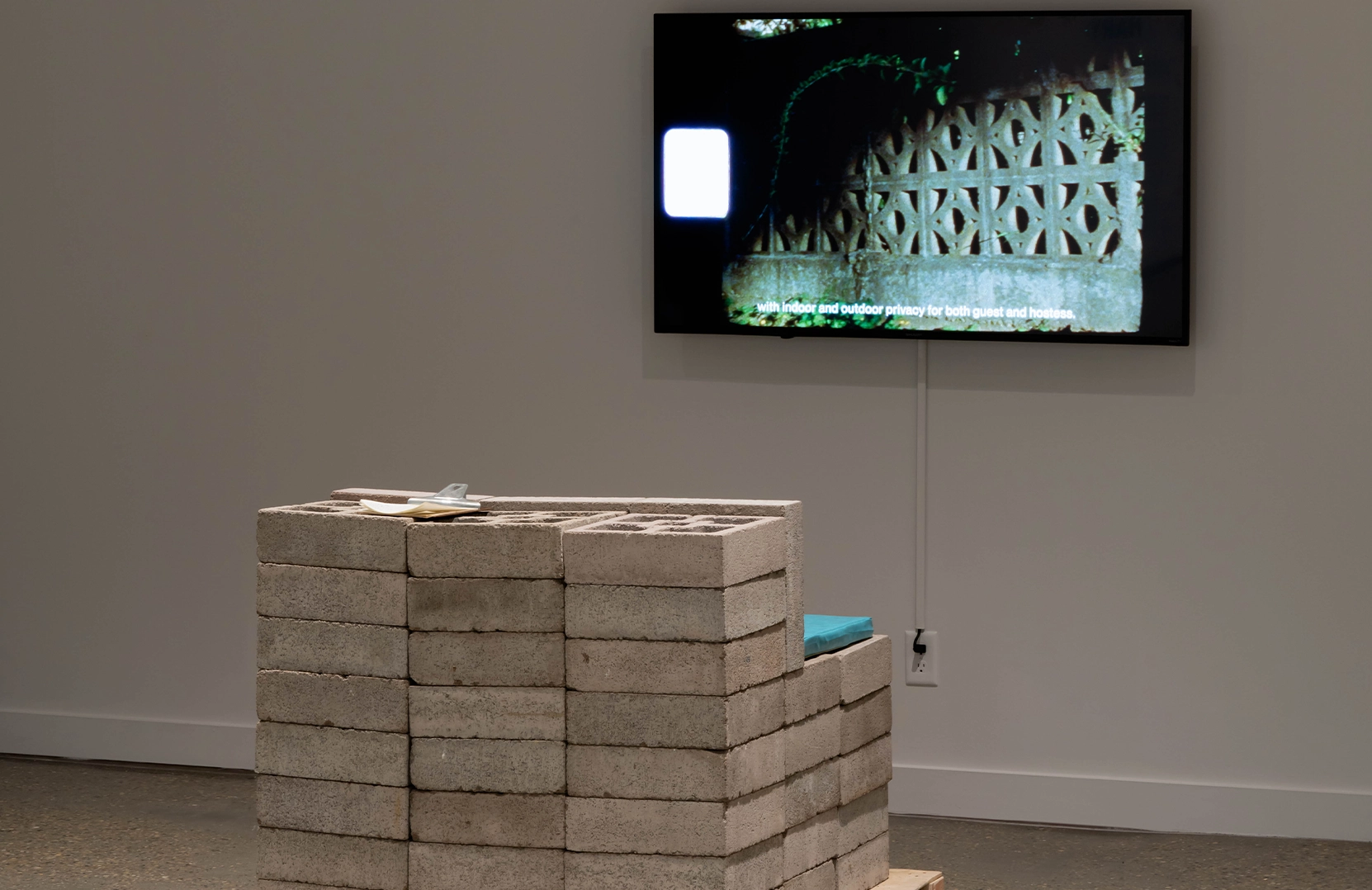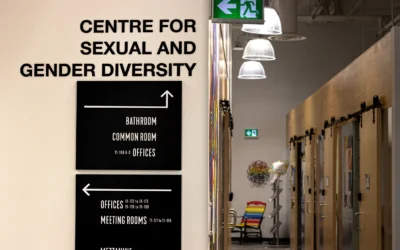Exploring Mary Imrie and Jean Wallbridge’s lives, love, and their impact on Edmonton.
Originally published on November 1, 2024.
Exhibition names are flashy. The names are carefully crafted to capture a reader’s imagination and leave them longing to understand the beauty behind the title. The current inhabitant of the Mitchell Art Gallery (MAG) has a name that calls out something bold and delicate.
GLAD YOU CLOSER HOME/NEW WHITE WHISKER MARY is an immersive exhibition presented by multidisciplinary artists Cait McKinney and Hazel Meyer. The exhibition, which will run until Dec. 7, is based on the archives, work, and lives of Edmontonian architects and couple Mary Imrie (1918-1988) and Jean Wallbridge (1912-1979).
Imrie and Wallbridge lived at Six Acres (now under the name Imrie House). The couple designed and built the house in the late 1950s to be their home, of course, but also the home of Canada’s first women-run architectural firm, Wallbridge & Imrie Architects. The exhibition was conceived when the MAG’s curator, Carolyn Jervis, met with Dr. Sarah Bonnemaison, an architect writing a book about Imrie and Wallbridge. Dr. Bonnemaison shared her research on the couple with Jervis, McKinney, and Meyer. A year and a half of research began, delving into the couple’s archives, their buildings in Edmonton, their collaborations with community partners, and their home at Six Acres.
When my friend and I walked into the exhibition for the first time as slightly curious students about to leave campus for the day, I remember I could not make a lot of sense of the pieces scattered around the gallery, but I was intrigued. The installation uses the empty space as a function of the art, guiding you to the wall to read the information banner, and then past the dog door to the TV playing a grainy film. I was already a fan when I saw a turkey being puppeteered to make it seem like it was responding to questions; the turkey was being interviewed. By speaking with McKinney, I learnt that the turkey is actually revealing true elements from the lives and work of Imrie and Wallbridge: a brood house the architects built for them, some turkey magazines they bought, and the ways the couple cared for the animals.
The more I understand the exhibit, the more I am enamoured with the story of the late couple’s intimacy woven by McKinney and Meyer. Jervis disclosed how the materials about the personal lives of Imrie and Wallbridge aren’t in the archives because of the time the architects lived in; they had to keep the evidence of their life together a secret. The artists had to fill in what McKinney calls “holes and gaps” that are common in queer archival histories. They took the correspondence and the details they had and embellished aspects to present us a quaint glimpse into what Imrie and Wallbridge’s love looked like and how they cared for themselves and the animals around them.
“The title is taken from a telegram that was sent from Mary in Edmonton to Jean while she was in Rome, Italy. To send a telegram, you had to go to a telegram office, and multiple clerks would handle your message and read it before it got to you, so it wasn’t a very private thing, but we really liked how there was this like, coded queer intimacy in the message.”
Cait McKinney, Artist and associate professor in the School of Communication at Simon Fraser University.
I think the exhibition’s title sums up this idea of delicate boldness. McKinney explains that when the couple’s architectural business was active later in their lives, the couple had to travel separately. Someone had to stay in Edmonton to run it. McKinney says, “The title is taken from a telegram that was sent from Mary in Edmonton to Jean while she was in Rome, Italy. To send a telegram, you had to go to a telegram office, and multiple clerks would handle your message and read it before it got to you, so it wasn’t a very private thing, but we really liked how there was this like, coded queer intimacy in the message.” Mary is telling Jean that she’s glad Jean’s coming home. With “NEW WHITE WHISKER MARY,” McKinney says, “it says something beautiful about aging; maybe she or their cat has a new white whisker, but it was also evidence of coded intimate exchange.” The exhibition made me think about the many stories of love and intimacy that were buried and hushed by outdated norms of the past, and the stories of today that we must make sure do not get buried or forgotten. Jervis wants MacEwan students to think about the many experimental and creative ways they can manifest what they learn at university. Supporting unique retellings of stories is important for building a society that allows voices to be heard. I encourage you to please visit the MAG, walk around the installation and watch a bit of the film. As you stand in the MAG, and as you walk away to your normalcy, think about the histories of the people who built the city we live in and how we can pay it forward.
Photos by Blaine Campbell, Courtesy of the Mitchell Art Gallery.





Interesting read. Very clearly written and enlightening. Well done!
What a piece!
Very beautiful and imaginative read.
Kudos dear Ahanavi!
For all the love stories still untold, Thank you
Great piece, thanks for carrying me on this journey